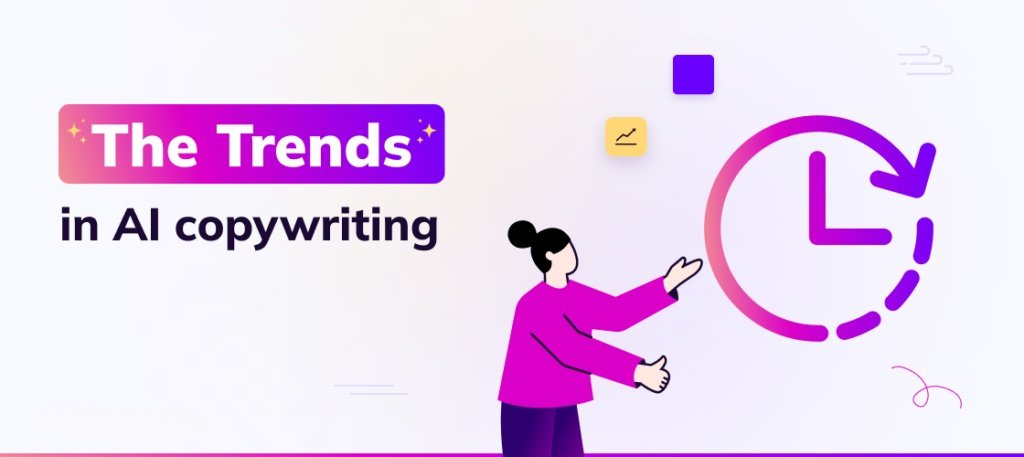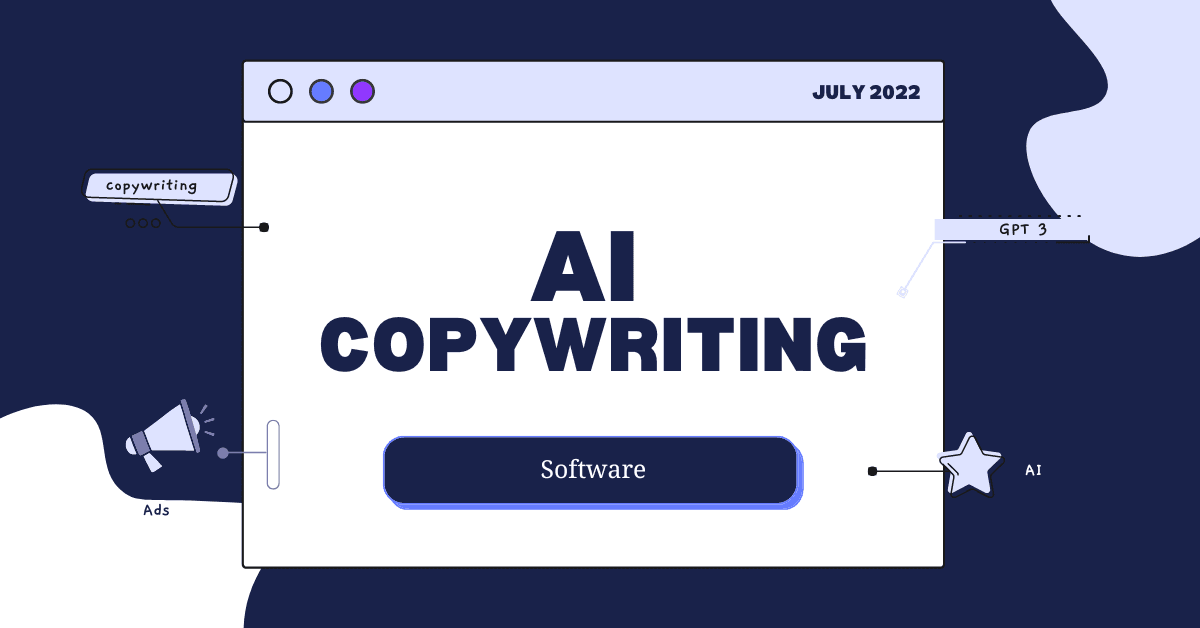Copywriting has always been a vital part of marketing. With the rise of AI, the landscape is changing. AI tools are becoming powerful allies for copywriters. They help create engaging content faster and with ease. However, leveraging AI effectively requires knowing how to use these tools to their full potential. In this guide, we’ll explore practical tips and tricks to get the best out of AI in copywriting.
Understanding AI in Copywriting
What is AI Copywriting?
AI copywriting involves using artificial intelligence tools to create written content. These tools analyze vast amounts of data to understand language patterns. They can generate text that mimics human writing.
AI tools can help create blog posts, social media updates, email newsletters, and more. They save time and enhance creativity, but human oversight is crucial to ensure quality and relevance.
Why Use AI for Copywriting?
AI tools offer several benefits. They can quickly generate large volumes of content. They also help overcome writer’s block by providing new ideas.
AI can optimize content for SEO by suggesting keywords and analyzing competitors. Moreover, these tools can personalize content for different audiences, increasing engagement and conversions.
Getting Started with AI Copywriting
Identifying Your Copywriting Needs
Before diving into AI copywriting, it’s essential to understand your specific needs. For startup founders, time and resources are often limited. Identify the areas where AI can offer the most value.
This could be generating blog posts, creating social media content, drafting emails, or writing product descriptions. Assess your current content workflow and pinpoint where AI can streamline processes and enhance productivity.
Training Your AI Tools
Most AI copywriting tools learn and improve over time. Take advantage of this by training your AI tools to understand your brand voice and style. Input a variety of existing content that embodies your brand’s tone and language.
The more examples you provide, the better the AI will perform. Regularly update the training data with new content to ensure the AI remains aligned with your evolving brand identity.
Creating a Content Calendar
A well-structured content calendar is crucial for maintaining consistency. Use AI to help generate ideas and plan your content schedule.
Input your marketing goals, product launches, and key dates into the AI tool. It can suggest timely and relevant content ideas. A content calendar ensures that you have a steady stream of content and helps avoid last-minute rushes, ensuring better quality and coherence.
Collaborating with Your Team
Integrate AI tools into your team’s workflow to enhance collaboration. For instance, your marketing team can use AI to draft initial content, which your creative team can then refine and personalize.
This approach combines the efficiency of AI with the creativity of human writers. Establish clear guidelines on how and when to use AI tools to ensure everyone is on the same page and maximizing their potential.
Setting Clear Objectives
Define clear objectives for your AI copywriting efforts. Are you aiming to increase website traffic, improve SEO rankings, or boost engagement on social media?
Setting specific goals helps measure the effectiveness of AI-generated content. Use analytics tools to track performance against these objectives. Regularly review and adjust your strategy based on the results to ensure continuous improvement.
Experimenting and Iterating
AI tools offer a fantastic opportunity to experiment with different types of content. Test various formats, tones, and styles to see what resonates most with your audience.
Use A/B testing to compare the performance of AI-generated content against traditional content. Collect data and feedback to refine your approach. Iteration is key to leveraging AI effectively and finding the perfect balance between automation and human creativity.
Ensuring Brand Consistency
Maintaining brand consistency is crucial, especially for startups trying to build a recognizable identity. AI can assist in maintaining this consistency by following predefined guidelines.
Regularly review the AI-generated content to ensure it aligns with your brand’s messaging and aesthetics. If discrepancies arise, adjust the input data or provide additional training to the AI tool. Consistent brand voice and style build trust and recognition among your audience.
Investing in Quality AI Tools
Choosing the right AI tools is vital for success. Invest in quality AI copywriting tools that offer comprehensive features and excellent customer support. While free or cheaper tools may seem attractive, they often lack the sophistication needed for high-quality content creation.
Look for tools that offer customization options, integration with other platforms, and regular updates. This investment pays off by ensuring you have reliable and efficient support for your copywriting needs.
Building a Feedback Loop
Establish a robust feedback loop to continuously improve AI-generated content. Encourage your team to provide feedback on the AI’s performance. Analyze audience reactions and engagement metrics to identify areas for improvement.
Regular feedback helps the AI tool learn and adapt, leading to better content over time. This iterative process ensures that your content remains relevant and engaging.
Planning for Scaling
As your startup grows, your content needs will expand. Plan for scalability by gradually increasing the use of AI in your content creation process. Start with smaller tasks and progressively integrate AI into more complex projects.
Ensure your AI tools can handle increased workloads and maintain quality. Scalable AI solutions allow you to meet growing content demands without compromising on quality or consistency.
Keeping Up with AI Advancements
The field of AI is rapidly evolving. Stay updated with the latest advancements and trends in AI copywriting. Regularly explore new tools and features that can enhance your content strategy.
Join industry forums, attend webinars, and follow thought leaders to keep abreast of innovations. Being proactive in adopting new technologies ensures that your startup remains competitive and can leverage the full potential of AI in copywriting.
Practical Tips for Effective AI Copywriting
Crafting Compelling Headlines
Headlines are critical for grabbing attention. AI tools can help generate multiple headline options quickly. Use these suggestions as a starting point.
Refine them to ensure they are catchy and relevant. Test different headlines to see which ones perform best. Remember, a great headline is clear, concise, and promises value.
Refining Content Quality
Startups must prioritize high-quality content to stand out in competitive markets. Use AI tools to refine content by focusing on clarity, coherence, and engagement.
AI can help identify and eliminate redundancy, streamline complex ideas, and enhance readability. Regularly review AI-generated content to ensure it aligns with your quality standards. Incorporate clear calls to action and ensure the content is compelling and relevant to your audience.
Aligning AI Output with Brand Strategy
Ensure that AI-generated content aligns with your overall brand strategy. Define your brand’s unique selling points and key messages. Input these elements into the AI tool to guide content creation.
Regularly update the AI with new brand guidelines or strategic shifts. This ensures that all generated content consistently reflects your brand’s core values and strategic goals, fostering a cohesive brand image.
Enhancing User Experience
AI can help tailor content to enhance user experience. Personalization is key; use AI to analyze user behavior and preferences, then generate content that speaks directly to individual needs.
For example, customize landing pages based on user segments or personalize email marketing campaigns. AI tools can also optimize content layout and structure to ensure it is user-friendly and engaging. A positive user experience increases satisfaction and loyalty.
Optimizing for SEO
SEO is crucial for online visibility. AI tools can assist in optimizing content for search engines. Start by identifying relevant keywords. Use AI to analyze competitors and find keyword gaps.
Incorporate these keywords naturally into your content. Also, use AI to generate meta tags, alt texts, and snippets. This ensures your content is fully optimized.
Building Content Partnerships
AI can facilitate content partnerships by identifying potential collaborators and influencers in your industry. Use AI tools to analyze social media and industry publications to find thought leaders and complementary brands.
Partnering with others can expand your reach and introduce your brand to new audiences. AI can also help draft outreach messages and suggest topics for collaboration, making the partnership process more efficient.
Measuring ROI
Measuring the return on investment (ROI) of your AI copywriting efforts is crucial. Use AI analytics tools to track key performance indicators (KPIs) such as engagement rates, conversion rates, and lead generation.
Regularly review these metrics to assess the effectiveness of your content strategy. Adjust your approach based on data-driven insights to maximize ROI. Understanding what works and what doesn’t allows you to continuously refine your strategy and achieve better results.
Scaling Content Production
As your startup grows, scaling content production becomes essential. AI can help manage increased content demands without compromising quality.
Develop a scalable content production workflow where AI handles routine tasks and initial drafts, while your team focuses on strategic oversight and final edits. This approach allows you to produce more content efficiently, meeting the growing needs of your audience while maintaining high standards.
Advanced Strategies for AI Copywriting
Personalizing Content
Personalization increases engagement. AI tools can analyze audience data to create tailored content. Start by segmenting your audience based on demographics, behavior, or preferences.
Use AI to generate content that speaks directly to each segment. For example, if you’re emailing a young audience, the tone can be casual and fun. For a more mature audience, a formal tone might work better. Personalization makes your content more relevant and appealing.
Using AI for Research
Research is a time-consuming part of copywriting. AI can speed up this process. Tools like ChatGPT can provide information on various topics quickly.
They can summarize articles, highlight key points, and suggest related topics. This helps you gather information faster, giving you more time to focus on writing. However, always verify the information provided by AI to ensure accuracy.
Creating Engaging Stories
Stories are a powerful tool in copywriting. They captivate the audience and make your message memorable. AI can help generate story ideas and even outline them for you.
Input a few details about your product or service, and the AI can suggest storylines. Use these as a base to build your narrative. Remember, the human touch is vital in storytelling. Add personal anecdotes and emotions to make the story resonate.
Editing and Proofreading
AI tools excel in editing and proofreading. They can catch grammatical errors, typos, and awkward sentences. Tools like Grammarly and ProWritingAid offer suggestions for improvement.
Use these tools to polish your content. However, don’t rely solely on AI. A final review by a human is essential to ensure the content flows well and maintains the desired tone.
Enhancing Conversion Rates with AI
Improving conversion rates is a primary goal for any startup. Use AI to analyze user behavior and identify patterns that lead to conversions.
AI can help optimize landing pages, call-to-actions, and content formats to maximize conversion rates. Implement AI-driven A/B testing to continuously refine these elements. Understanding and leveraging these insights allows you to create content that effectively drives conversions and grows your business.
Integrating AI with CRM Systems
Integrate AI tools with your Customer Relationship Management (CRM) system to enhance your content strategy. AI can analyze CRM data to provide personalized content recommendations for each customer segment.
This integration ensures that your content strategy is aligned with your overall sales and marketing efforts, providing a seamless experience for your audience. It also helps in tracking the effectiveness of your content in driving customer engagement and sales.
Fostering Continuous Improvement
AI in copywriting should be seen as a tool for continuous improvement. Regularly review and analyze the performance of AI-generated content. Use these insights to refine your AI models and improve their output.
Stay updated with the latest advancements in AI technology and incorporate new tools and techniques into your strategy. This commitment to continuous improvement ensures that your content remains cutting-edge and effective.
AI Copywriting for Different Platforms

Blogging
Blogs are a popular platform for sharing information and attracting traffic. Use AI to generate blog post ideas based on trending topics. AI can also help structure your blog.
Start with an outline, and let the AI fill in the details. This approach ensures your blog is comprehensive and well-organized. Use AI tools for keyword optimization to improve your blog’s SEO. Finally, use readability tools to ensure your blog is easy to read and engaging.
Social Media
Social media requires short, punchy content. AI tools can help craft engaging posts. They can suggest catchy phrases and trending hashtags. Use AI to analyze past performance and identify what type of content resonates with your audience.
This helps you create more effective posts. Also, consider using AI to schedule posts and analyze engagement metrics. This saves time and helps you maintain a consistent posting schedule.
Email Marketing
Email marketing is all about personalization. AI can help craft personalized email content for different segments of your audience. Use AI to generate subject lines that grab attention.
AI can also suggest content based on the recipient’s past interactions with your emails. This increases the chances of engagement. Additionally, use AI tools to optimize email send times and analyze performance. This ensures your email campaigns are effective.
Product Descriptions
Creating product descriptions can be repetitive. AI can generate multiple descriptions quickly. Provide the AI with details about the product, and it can create engaging descriptions.
Use AI to highlight key features and benefits. Ensure the descriptions are clear and concise. This approach saves time and ensures consistency across your product listings.
Advanced AI Techniques in Copywriting
Leveraging AI for Content Ideas
Coming up with fresh content ideas can be challenging. AI tools can help brainstorm new topics based on current trends and your audience’s interests.
For instance, tools like AnswerThePublic and BuzzSumo use AI to analyze search queries and social media trends. They suggest topics that are currently popular. Input a keyword related to your niche, and the AI will generate a list of potential content ideas. This helps keep your content relevant and engaging.
Enhancing Creativity with AI
AI can also enhance creativity by providing a different perspective. If you’re stuck on a particular section, input what you have so far into an AI tool. The tool can suggest ways to expand or rephrase your content.
This can spark new ideas and help you overcome writer’s block. AI can also mix different writing styles, helping you find a unique voice for your content.
Utilizing AI for Audience Analysis
Understanding your audience is key to effective copywriting. AI tools can analyze audience data to provide insights into their preferences and behavior.
Tools like HubSpot and Google Analytics use AI to track user interactions. They provide detailed reports on what type of content performs best. Use this data to tailor your copy to meet your audience’s needs and expectations.
Automating Routine Tasks
Routine tasks like scheduling posts, analyzing performance, and updating content can be time-consuming. AI tools can automate these tasks.
For example, social media management tools like Hootsuite use AI to schedule posts at optimal times. Analytics tools use AI to generate performance reports. Content management systems (CMS) use AI to update and repurpose old content. Automation saves time and allows you to focus on more strategic tasks.
Overcoming Challenges in AI Copywriting

Maintaining Human Touch
One of the main challenges of AI copywriting is maintaining a human touch. While AI can generate content, it lacks the ability to convey emotions and personal experiences effectively.
To overcome this, always review and edit AI-generated content. Add personal anecdotes, humor, and emotions to make the content more relatable. Ensure the content aligns with your brand’s voice and values.
Ensuring Accuracy
AI tools can sometimes provide inaccurate or outdated information. Always fact-check the information generated by AI. Cross-reference with reliable sources to ensure accuracy.
This is especially important for content related to health, finance, and legal topics. Human oversight is crucial to maintain the credibility and trustworthiness of your content.
Avoiding Plagiarism
AI tools generate content based on existing data. There is a risk of unintentional plagiarism. Use plagiarism detection tools like Copyscape to ensure the content is original.
Paraphrase and add unique insights to make the content truly yours. This helps maintain the integrity of your content and avoids potential legal issues.
Handling Ethical Concerns
AI in copywriting raises ethical concerns related to job displacement and data privacy. Be transparent about using AI in your content creation process.
Ensure you are using data responsibly and respecting privacy regulations. Balance the use of AI with human creativity and judgment. This approach fosters trust and maintains ethical standards.
Real-World Applications of AI in Copywriting
Case Studies
E-commerce
An online retailer used AI to generate product descriptions. The AI tool analyzed customer reviews and highlighted key features.
This resulted in more engaging and accurate descriptions. The retailer saw a 20% increase in conversion rates.
Blogging
A travel blogger used AI to generate blog post ideas and outlines. The AI suggested topics based on current travel trends and audience preferences.
This helped the blogger maintain a consistent posting schedule and increase engagement.
Social Media
A brand used AI to analyze social media performance. The AI tool identified the best times to post and suggested content that resonated with the audience.
This led to a 30% increase in engagement and a more consistent brand presence.
Best Practices
Start Small
Begin by using AI for small tasks like generating headlines or social media posts. Gradually integrate AI into more complex tasks as you become comfortable with the tool.
Combine AI with Human Creativity
Use AI to handle routine tasks and generate ideas. Focus your efforts on adding personal touches and creative elements. This ensures a perfect balance between efficiency and human touch.
Continuously Monitor and Adjust
AI tools learn and improve over time. Continuously monitor the performance of AI-generated content. Provide feedback and make adjustments as needed.
This helps the AI tool learn your preferences and improve its output.
Practical Tips for Mastering AI Copywriting
Developing a Unique Voice
While AI can generate content, maintaining a unique voice is crucial. Your brand’s voice sets you apart. Start by defining your brand’s personality. Is it formal or casual? Serious or playful?
Ensure the AI tool you use understands this. Many tools allow you to input guidelines or preferences. Regularly review AI-generated content to ensure it aligns with your brand’s voice. Adjust the tone and style as needed to maintain consistency.
Engaging with Your Audience
Engagement is key to successful copywriting. Use AI to analyze audience feedback and interactions. AI can identify which content resonates most with your audience. Use this information to tailor future content.
For instance, if a particular blog post received high engagement, create more content on similar topics. Respond to comments and feedback to build a connection with your audience. AI tools can help by suggesting responses or automating replies to common queries.
Creating High-Quality Long-Form Content
Long-form content like eBooks, whitepapers, and detailed guides provide value and establish authority. AI can assist in creating such content. Start with a detailed outline.
Use AI to expand each section, ensuring comprehensive coverage of the topic. Break the content into manageable parts. Add your insights and expertise to enhance the value. Use AI for editing and proofreading to ensure the content is error-free and polished.
Leveraging AI for Content Distribution
Creating content is just one part of the puzzle. Distributing it effectively is equally important. AI tools can help with content distribution. They can identify the best platforms and times to share your content.
For example, social media management tools can schedule posts based on when your audience is most active. Email marketing tools can segment your audience and personalize content for each segment. This ensures your content reaches the right people at the right time.
Monitoring and Analyzing Performance
Continuous improvement is crucial for successful copywriting. Use AI tools to monitor and analyze the performance of your content. Look at metrics like engagement, conversion rates, and bounce rates.
AI can provide insights into what’s working and what’s not. Use this data to refine your strategy. For instance, if a particular type of post performs well, create more of that content. Regular analysis helps you stay ahead and continuously improve your copywriting efforts.
Future Trends in AI Copywriting

Increasing Personalization
Personalization will continue to be a significant trend. AI tools will become more advanced in analyzing data and understanding audience preferences. This will enable more personalized and targeted content.
Expect AI to provide even more tailored recommendations based on individual user behavior and preferences.
Enhanced Creativity
AI is becoming increasingly creative. Future AI tools will offer even more innovative ideas and suggestions.
They will assist not just in generating content but in creating unique and engaging narratives. This will push the boundaries of creativity and open up new possibilities for content creation.
Improved Integration with Other Tools
AI copywriting tools will integrate more seamlessly with other marketing tools. This will provide a more unified approach to content creation, distribution, and analysis.
Expect to see AI tools working in tandem with CRM systems, email marketing platforms, and social media management tools.
Ethical AI
As AI becomes more prevalent, ethical considerations will gain importance. There will be a focus on ensuring transparency, avoiding bias, and respecting privacy.
Ethical AI practices will become a standard in the industry, ensuring responsible and fair use of AI in copywriting.
Wrapping it up
AI in copywriting offers transformative potential for startup founders. By leveraging AI tools, you can streamline content creation, enhance personalization, and optimize for SEO, all while maintaining a unique brand voice. Strategic integration of AI can improve audience engagement, drive conversions, and ensure your content remains relevant and competitive.
As AI technology continues to evolve, staying informed and adaptable will allow you to fully harness its capabilities, making your content strategy more efficient and impactful. Balancing AI efficiency with human creativity is the key to achieving the best results in your copywriting efforts.
READ NEXT:
- Catchy Name Ideas for Social Media Marketing Agencies
- Effective Marketing Strategies for Mary Kay Consultants
- How to Market Your Jewelry Business
- Top Marketing Strategies for Apartments in 2023
- How to Promote Your Business Effectively






















Comments are closed.